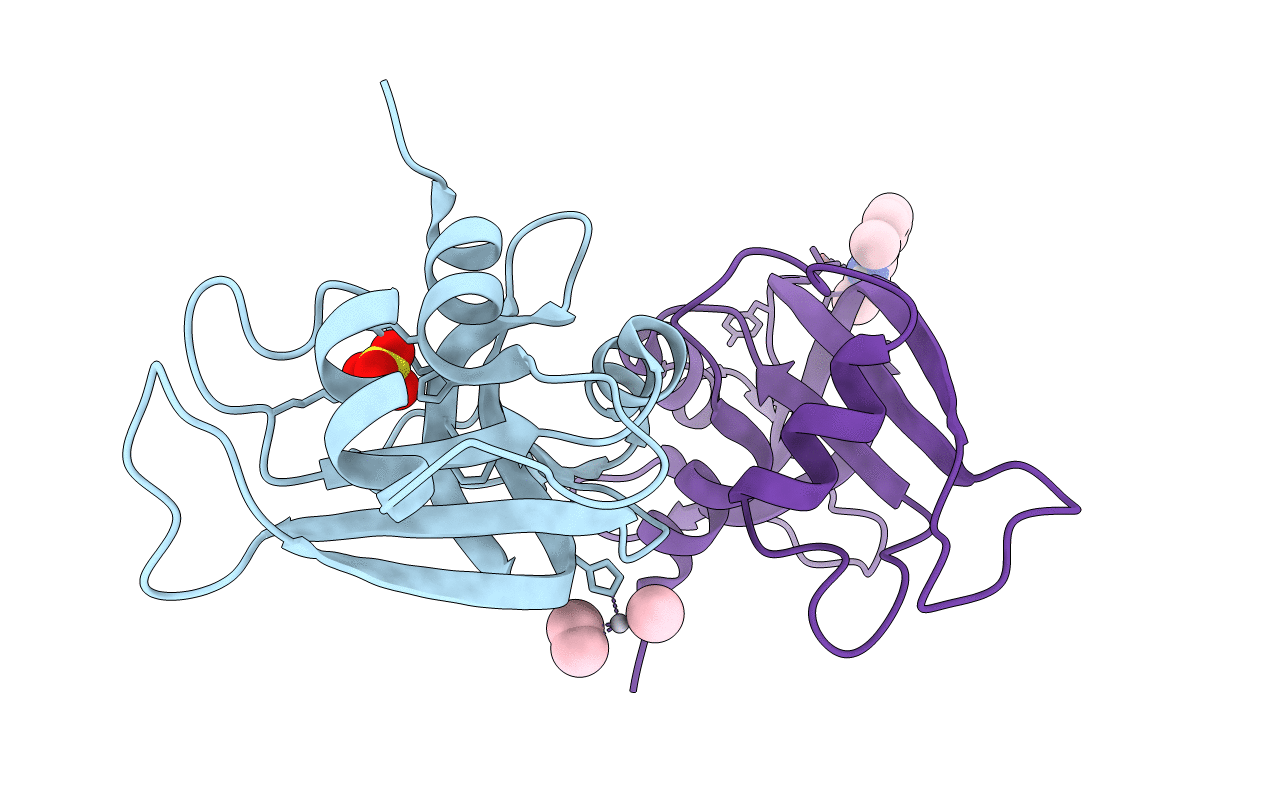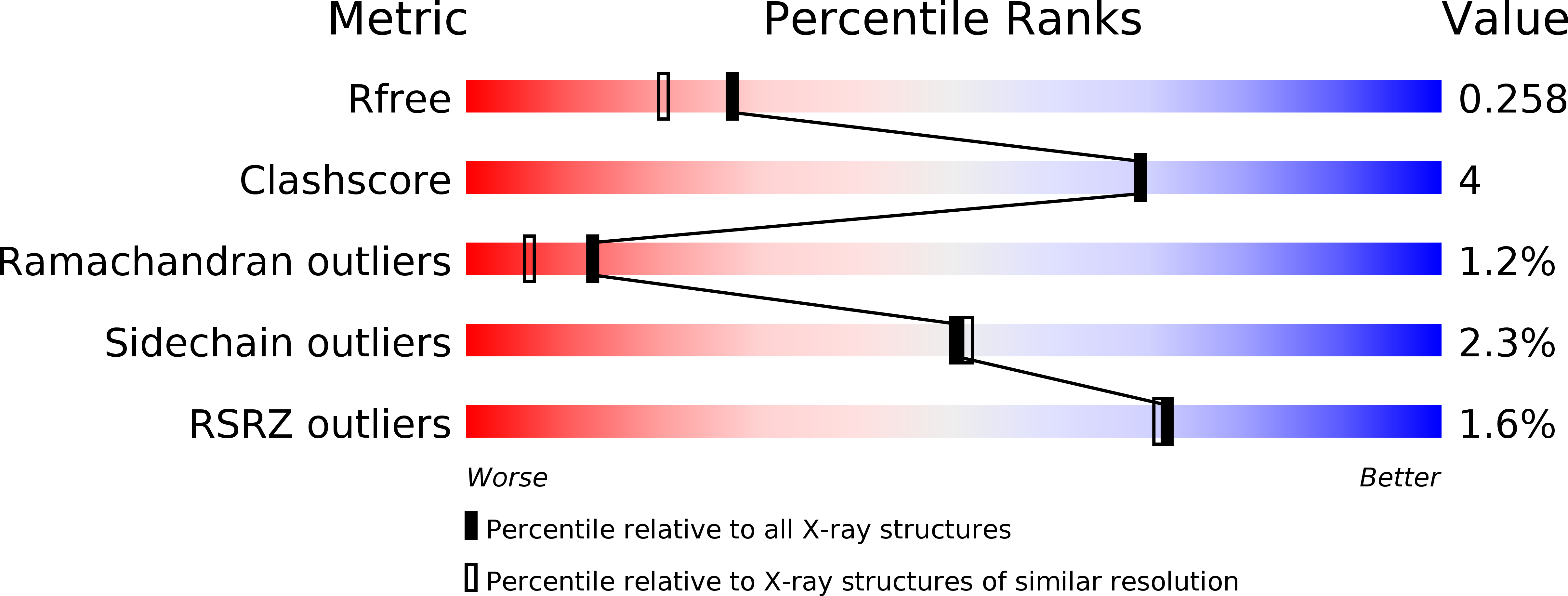
Deposition Date
2019-01-07
Release Date
2019-02-27
Last Version Date
2024-11-06
Entry Detail
PDB ID:
6QE9
Keywords:
Title:
The X-ray structure of the adduct formed in the reaction between bovine pancreatic ribonuclease and complex I, a pentacoordinate Pt(II) compound containing 2,9-dimethyl-1,10-phenanthroline, dimethylfumarate, methyl and iodine as ligands
Biological Source:
Source Organism:
Bos taurus (Taxon ID: 9913)
Method Details:
Experimental Method:
Resolution:
2.03 Å
R-Value Free:
0.25
R-Value Work:
0.17
R-Value Observed:
0.18
Space Group:
C 1 2 1


